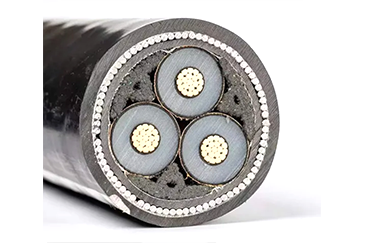Irradiated cross-linked cables
Time of Release:
2022-11-26
Source:
Author:
In 1960, Rachem developed irradiated cross-linked cables. This method does not require the addition of a cross-linker. In the early fifties, the United States had discovered the use of radioactive isotopes, reactor waste, the reactor irradiation itself, and the energy of electron accelerators to crosslink polyethylene. It was later found that only the high-energy rays produced by electron accelerators had sufficient intensive irradiation power and use efficiency, and could be used in wire and cable manufacturing.
Irradiation is the use of high-energy particle rays (such as β rays) to irradiate a linear molecular polymer, opening several free groups on its chain, referred to as contacts. The contacts are very active and can cross-connect two or several linear molecules. Irradiation crosslinking is generally suitable for low-voltage cables with thin insulation thickness. Its main advantages are:
(1) Fast production speed and small space occupation;
(2) There are many types of materials that can be processed, such as PE, PVC, CPE, PP, almost all polymers, and there are many varieties of products;
(3) The product has better heat resistance, wear resistance and higher electrical properties; Flame retardant;
(4) Low power consumption.
But there are also some problems:
(1) Large one-time investment in equipment;
(2) The irradiation of larger section cables is uneven, and after repeated irradiation, the cable bends too many times, which is not suitable for the production of cables of 10kV and above. It is mainly suitable for electrical equipment cables, and it is also possible for smaller section cables and lkV~10kV overhead cables.
(3) Low equipment operating rate.
previous page:
Next page:
Related information

Residential Wiring Projects: The Essential Role of 300/500V Electric Wires
Understanding 300/500V Electric Wires in Residential Wiring Projects When undertaking residential wiring projects, the choice of electric wire is pivotal. Among the various types of wires available, **300/500V electric wires** play a crucial role in ensuring safety, efficiency, and compliance with electrical standards. This article delves into the significance of 300/500V wires, their applications
2025-11-15


Understanding 450/750V House Use Electric Wires: Essential Insights for Professionals
When it comes to residential electrical installations, the choice of wiring is crucial for ensuring safety, efficiency, and compliance with regulatory standards. Among the various types of wires available, 450/750V house use electric wires are particularly common in residential settings. These wires are designed to handle the voltage levels typically found in household electrical systems, making t
2025-11-12


The Role of 26/35kV Aluminum Power Cables in Smart Grid Technology
The Role of 26/35kV Aluminum Power Cables in Smart Grid Technology Table of Contents 1. Introduction to Smart Grids and Power Cables 2. Importance of 26/35kV Aluminum Power Cables 3. Benefits of Using Aluminum for Power Cables 4. Applications of 26/35kV Aluminum Power Cables in Smart Grids 5. Technical Specifications of 26/35kV Aluminum Power Cables 6. Challenges in Implementing 26/35
2025-11-09




